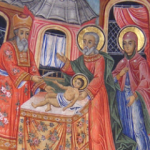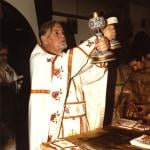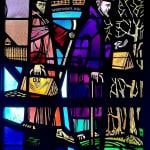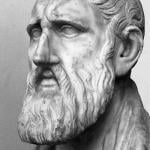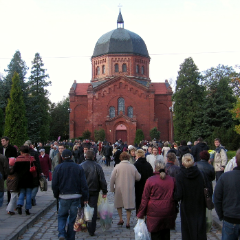
You get a glimpse of this in Hebrews 11, in which the apostle Paul underlines the lives and deeds of Noah, Abraham, Isaac, Jacob, Moses, and others. These were all holy and God-fearing people, but as St. Paul says, “apart from us they should not be made perfect.”
There is no such thing as an individual Christian. In a sense, each Christian needs every other Christian for our salvation to be complete. That was true for the saints of the Old and New Testaments, and it’s true of us right now. God’s people are in it together, a point St. Paul also drives home in his first letter to the Corinthians where he speaks of individuals as members of the Body of Christ.
I ran across two passages that reminded me of this reality, our mutual togetherness as the Body. First this from T.S. Eliot’s “Choruses from ‘The Rock’”:
What life have you if you have not life together?
There is no life that is not in community
And no community not lived in praise of GOD.
Even the anchorite who meditates alone,
For whom the days and nights repeat the praise of GOD,
Prays for the Church, the Body of Christ incarnate.
The Body of Christ is not an individual affair, but Eliot laments that we live “dispersed on ribbon roads” and only care about our neighbors if they make “too much disturbance. . . .” We are, he says, “Familiar with the roads and settled nowhere.” Our lack of community is lamentable; we become members unto ourselves, not each other.
Then there’s this from one of John Donne’s most beloved meditations (No. 17 from “Devotions upon Emergent Occasions”; I’ve taken the liberty of modernizing his spelling):
The Church is Catholic, universal, so are all her actions; all that she does belongs to all. When she baptizes a child, that action concerns me; for that child is thereby connected to that Head which is my Head too, and engrafted into that body, whereof I am a member. And when she buries a man, that action concerns me: all mankind is of one Author, and is one volume. . . .
Following Donne’s lead, think of another action of the church, celebrating the Eucharist. When we take communion it is not only communion with our Lord and Savior, but also our neighbors, our fellow members of the Body. That is why the creed is typically recited before partaking. The church fathers called the creed the “symbol of faith.” The etymology implies “joining together.” Standing and reciting the creed is a mutual expression of togetherness around certain beliefs. It’s a collective statement of belonging and unity. We are never so much the Church as when we gather around the cup. And we are likely never the Church if we do not.
When we are tempted to run away, to seek our own convenience, to go it alone, we should remember that we are called to community and our lives are only fully and really lived with each other in the Body.


